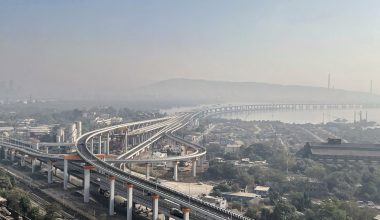Crude oil prices have often been impacted by unexpected events, significantly impacting the trade dynamics of the world’s most traded commodity. In recent months, crude oil prices have been on a recovering trajectory with caution, reflecting a complex interplay of supply and demand factors. Notably, the Organization of Petroleum Exporting Countries (OPEC) did not implement deeper supply cuts for the present quarter. However the supply disruptions in the Middle East added concerns to the global crude oil market. The tensions following the Israel-Hamas conflict further intensified with multiple episodes of attacks involving Houthis and countries aligned with Israel.
Middle East tensions did not impede the momentum of crude oil trade until November 2023, when the Yemen-based Houthi militia attacked commercial ships transiting the Red Sea. This incident prompted some vessels to reconsider their routes, opting to circumvent the Bab el-Mandeb chokepoint, a narrow strait along the Yemeni coast and the southern entrance to the Red Sea. Instead, these vessels opted for longer and more expensive routes around the African continent.
Ships traveling between Europe and Asia via the Suez Canal must navigate the Bab el-Mandeb Strait, a crucial oil and natural gas chokepoint representing 12% of seaborne oil trade and 8% of LNG trade in H1 2023. Major energy companies, such as Equinor and BP, are avoiding the Red Sea due to ongoing tensions. From January 2024, other key players, including Euronav, QatarEnergy, Torm, Shell, and Reliance, have also halted Red Sea transits. Vessels not using the Suez Canal often opt for the longer route around the Cape of Good Hope, significantly extending voyage durations, impacting freight rates, and increasing fuel costs. The ongoing drought and restrictions at the Panama Canal have prompted some Very Large Gas Carriers (VLGCs) to switch routes. Following attacks in November, flows through the Bab el-Mandeb slowed, with a notable decrease in crude oil and petroleum product trade. This disruption has particularly affected Russia, Iraq, Saudi Arabia, India, and other key players in their routes to Asia, the Mediterranean, and Europe.

Challenges in the economies of primary crude oil consumers
But even as supplies were being intruded on by unfavorable events, the crude oil prices floated at a modest pace as demand worries somehow alleviated the impact of disrupted supply. The US and China, the world’s largest crude oil consumers and the two largest economies globally, are currently grappling with challenges that pose a threat to the demand outlook for crude oil. The US is contending with issues arising from heightened inflation, a situation expected to prompt the Federal Reserve to prolong the period of higher interest rates. The Fed’s recent policy meeting highlighted the likelihood of maintaining elevated interest rates until inflation aligns with the central bank’s objective. US inflation grew at a faster than expected rate of 3.1% in January, which is still above Fed’s 2% objective. Besides, US job growth also exhibited a robust increase in January, underscoring the resilience of the US labor market and its potential to bolster broader economic expansion. The accompanying high wage rates suggest a potential inflationary impact, as increased earnings and job additions could stimulate heightened retail demand. Eventually, the business activities of the world’s largest oil consumer are being burdened by higher borrowing costs, subsequently dampening the demand outlook for the future.
The recovery of China’s economy was heavily struck by its struggling property sector throughout last year. Although the borrowing costs were lowered by the People’s Bank of China last year, the lack of adequate stimulus support measures has rather slowed down the recovery momentum of the world’s second-largest economy. For the last four months, China has been experiencing deflation, with the CPI marking its most rapid annual decline in 15 years as of January 2024, falling 0.8% annually. Meanwhile, China’s producer prices declined 2.5%, posting a decline for the sixteenth month. In January, the official Purchasing Managers’ Index (PMI) in China experienced a modest rebound, albeit staying below the pivotal 50-mark that distinguishes growth from contraction. In February 2024, the PBoC implemented its first reduction in the benchmark five-year loan prime rate since June, in a move aimed at revitalizing China’s sluggish property market. It was the largest one-time cut in the 5-year rate and the first reduction since June 2023 when the rate was trimmed by 10 basis points. On February 5, the PBoC reduced the reserve ratio requirements for its banks by 50 basis points, injecting CNY 1 trillion, equivalent to $139.8 billion, in long-term capital. Concurrently, there was a call for banks to actively facilitate loans for high-quality real estate developers. However, China’s property issue fundamentally does not hinge on mortgages, although it might contribute to a marginal boost in demand, and the investors are still looking for broader stimulus measures to revive the crisis-hit property sector.
Despite these challenges, OPEC expects a healthy global crude oil demand growth of 2.2 million barrels per day (mbpd) for 2024, reaching 104.4 mbpd. Demand from countries of OECD (Organization for Economic Cooperation and Development) is expected to rise by 0.3 mbpd. In non-OECD countries, demand is projected to grow by 2.0 mbpd, with China and the Middle East playing significant roles. Looking ahead to 2025, global oil demand is projected to expand by 1.8 mbpd, reaching 106.2 mbpd. Ongoing efforts by OPEC+ countries participating in the Declaration of Cooperation (DoC) are deemed crucial for maintaining a balanced and stable oil market.







